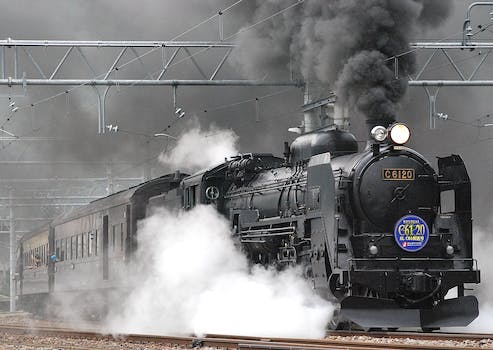-
Table of Contents
- How to Draw a Train: A Step-by-Step Guide
- Understanding the Anatomy of a Train
- Sketching the Basic Shape
- Adding Details
- Choosing the Right Tools
- Using Reference Images
- Practice Makes Perfect
- Adding Realism to Your Drawing
- Experimenting with Perspective
- Adding Texture and Detail
- Conclusion
- Q&A
- Q: What are some common mistakes to avoid when drawing a train?
- Q: How can I improve my train drawing skills?
- Q: What are some tips for adding realism to my train drawing?
- Q: What tools should I use when drawing a train?
- Q: How can I make my train drawing more dynamic and engaging?

Trains have long been a fascinating subject for artists and enthusiasts alike. Drawing a train can be a challenging yet rewarding experience, requiring attention to detail and precision. In this comprehensive guide, we will walk you through the process of drawing a train, from understanding its basic structure to adding intricate details that bring your drawing to life.
Understanding the Anatomy of a Train
Before you start drawing a train, it is essential to familiarize yourself with its basic anatomy. Trains consist of several key components, including:
- Engine or locomotive
- Boiler
- Tender
- Boxcar
- Passenger car
- Caboose
Sketching the Basic Shape
Begin by sketching the basic shape of the train using simple geometric forms. Start with the locomotive, which is typically the largest and most prominent part of the train. Use rectangles and circles to outline the body of the locomotive, paying attention to proportions and perspective.
Adding Details
Once you have the basic shape of the train, start adding details such as windows, doors, wheels, and smokestacks. Pay close attention to the placement of these elements to ensure accuracy and realism in your drawing.
Choosing the Right Tools
When drawing a train, it is important to use the right tools to achieve the desired effect. Consider using a combination of pencils, markers, and colored pencils to add depth and dimension to your drawing. Experiment with different shading techniques to create a sense of light and shadow.
Using Reference Images
One of the best ways to improve your train drawing skills is to study reference images of trains. Look for photographs or illustrations of trains from different angles and perspectives to gain a better understanding of their structure and design.
Practice Makes Perfect
Like any skill, drawing trains takes practice and patience. Set aside time each day to practice drawing trains, focusing on different aspects such as perspective, proportions, and details. The more you practice, the more confident you will become in your drawing abilities.
Adding Realism to Your Drawing
To make your train drawing more realistic, consider adding elements such as smoke, steam, and motion blur. These details can help bring your drawing to life and create a sense of movement and energy.
Experimenting with Perspective
Experiment with different perspectives when drawing a train to create dynamic and engaging compositions. Try drawing the train from a bird’s eye view, a side view, or a three-quarter view to add visual interest to your artwork.
Adding Texture and Detail
To add texture and detail to your train drawing, consider using cross-hatching, stippling, or other shading techniques. Pay attention to the materials and surfaces of the train, such as metal, glass, and wood, to create a realistic and immersive drawing.
Conclusion
Drawing a train can be a challenging yet rewarding experience for artists of all skill levels. By understanding the basic anatomy of a train, choosing the right tools, and practicing regularly, you can create detailed and realistic train drawings that capture the beauty and complexity of these iconic machines.
Q&A
Q: What are some common mistakes to avoid when drawing a train?
A: Some common mistakes to avoid include incorrect proportions, lack of attention to detail, and poor perspective.
Q: How can I improve my train drawing skills?
A: Practice regularly, study reference images, and experiment with different techniques to improve your train drawing skills.
Q: What are some tips for adding realism to my train drawing?
A: Consider adding elements such as smoke, steam, and motion blur to create a sense of movement and energy in your drawing.
Q: What tools should I use when drawing a train?
A: Consider using a combination of pencils, markers, and colored pencils to add depth and dimension to your train drawing.
Q: How can I make my train drawing more dynamic and engaging?
A: Experiment with different perspectives, textures, and details to create dynamic and engaging compositions in your train drawing.






